When Charles Darwin first noticed the finches of the Galapagos, he saw how their beaks suited each of the island’s environments. Birds worldwide have some unusual and downright strange adaptions for their beaks, from curves and odd shapes to special features for feeding.
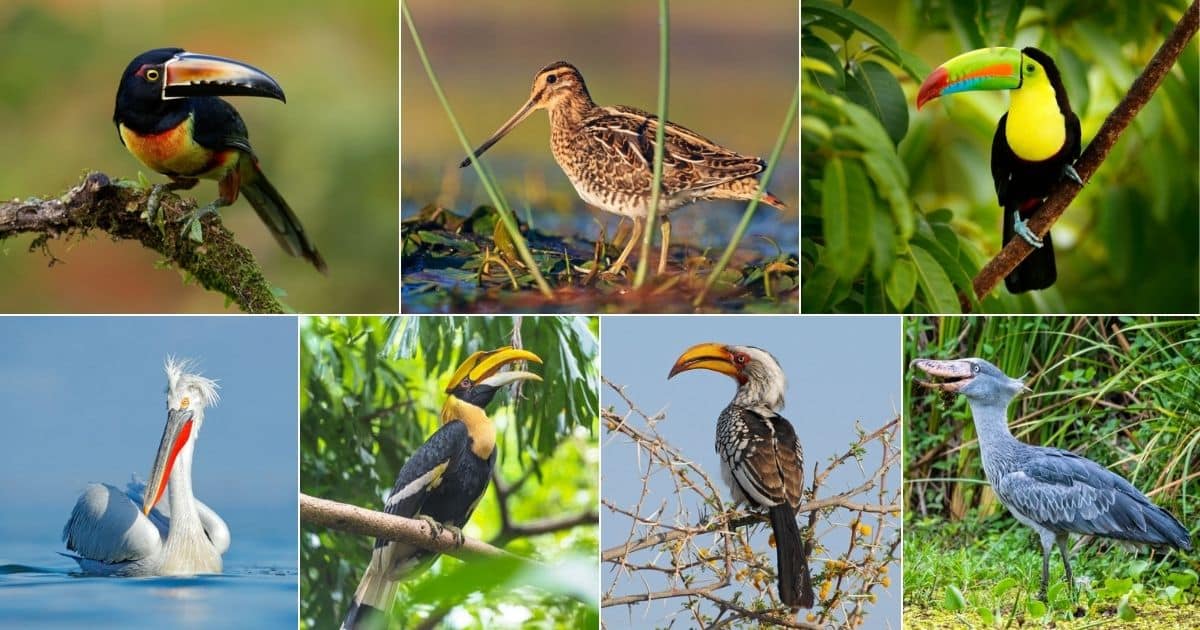
One of the most critical factors in beaks is their length, especially compared to their body, and some truly extraordinarily long-beaks birds love to strut their stuff. Long beaks give the bird advantages for catching prey, attracting mates, amplifying calls, and even fighting. These beaks have a variety of uses their owners take advantage of to survive in their natural environment.
Contents
1. Far Eastern Curlew
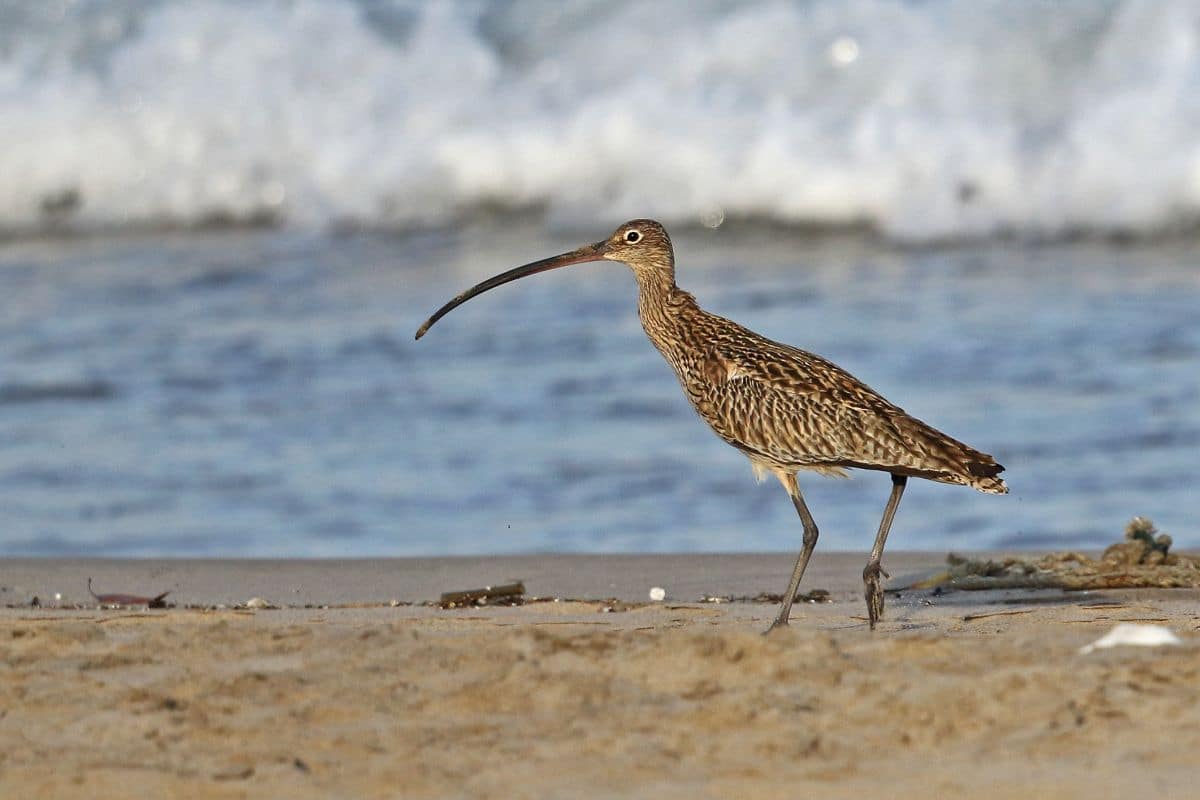
The Far Eastern Curlew is the largest sandpiper species in the world and uses its slightly curved downward beak to hunt for invertebrates that like to burrow beneath the ground.
2. Black Skimmer
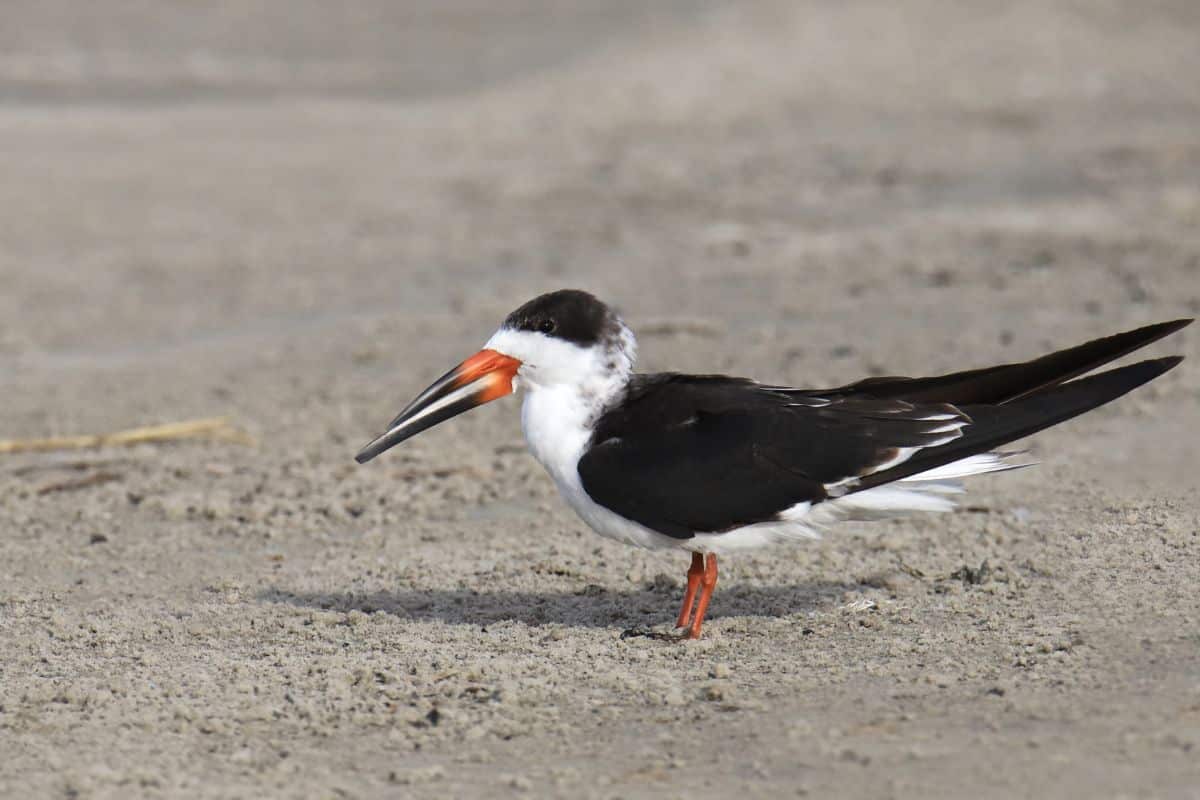
The Black Skimmer is a tough seabird that catches prey by skimming its large, razor-sharp lower mandible over the water’s surface, catching fish and other prey in its beak.
This bird has plenty of other striking qualities, like bright red feet that match the color of its feet, slitted eyes, extraordinarily rare in seabirds, and the lower half of its beak that juts out from its upper beak, a strange characteristic for a bird.
3. Marabou Stork
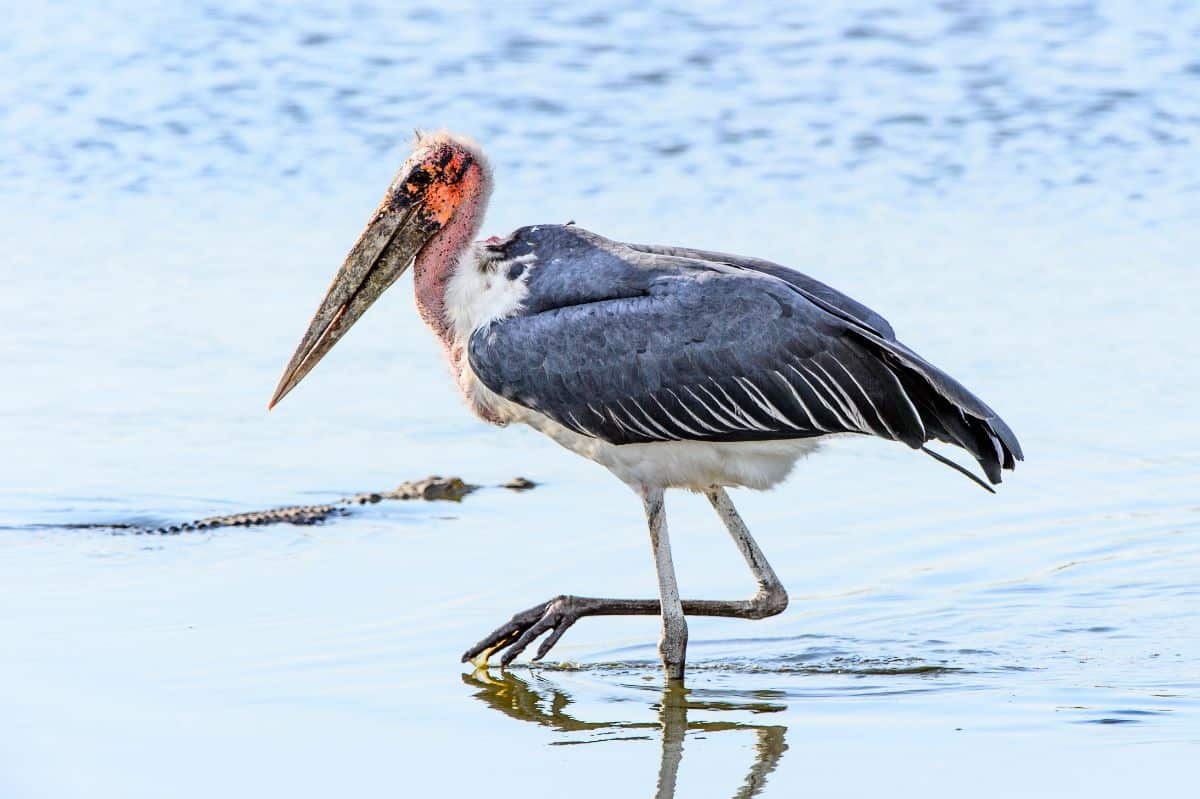
While it won’t be winning any beauty competitions, there’s no denying the fact that this stork has a very long beak. Its long beak helps it rip open carcasses and dive into carrion, as this bird is a scavenger constantly on the prowl for a fresh meal.
The Marabou Stork is the largest stork species and has the most prominent beak, though other stork’s beaks are also very impressive.
4. Toco Toucan
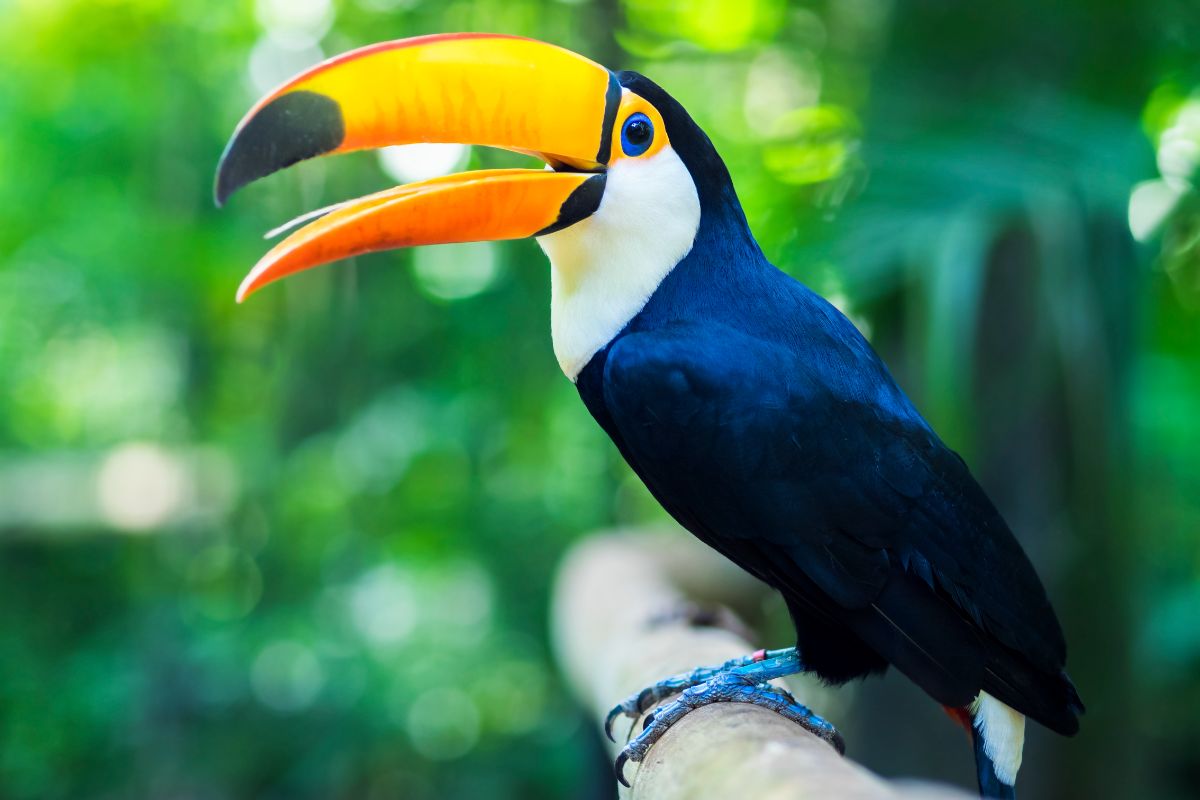
The largest species of toucan in the world, the Toco Toucan’s beak can be as long as its body! It’s the largest toucan species, but it doesn’t have the longest beak. You might think it would be too heavy, but it’s relatively light and fragile, made of keratin in a delicate honeycomb formation.
Its beak is mainly useless, but it does help disperse heat from its body and grab hard-to-reach food. The Toco Toucan can also use it to threaten predators and attract mates, although the beak’s effectiveness in these endeavors is questionable at best.
5. Dalmatian Pelican
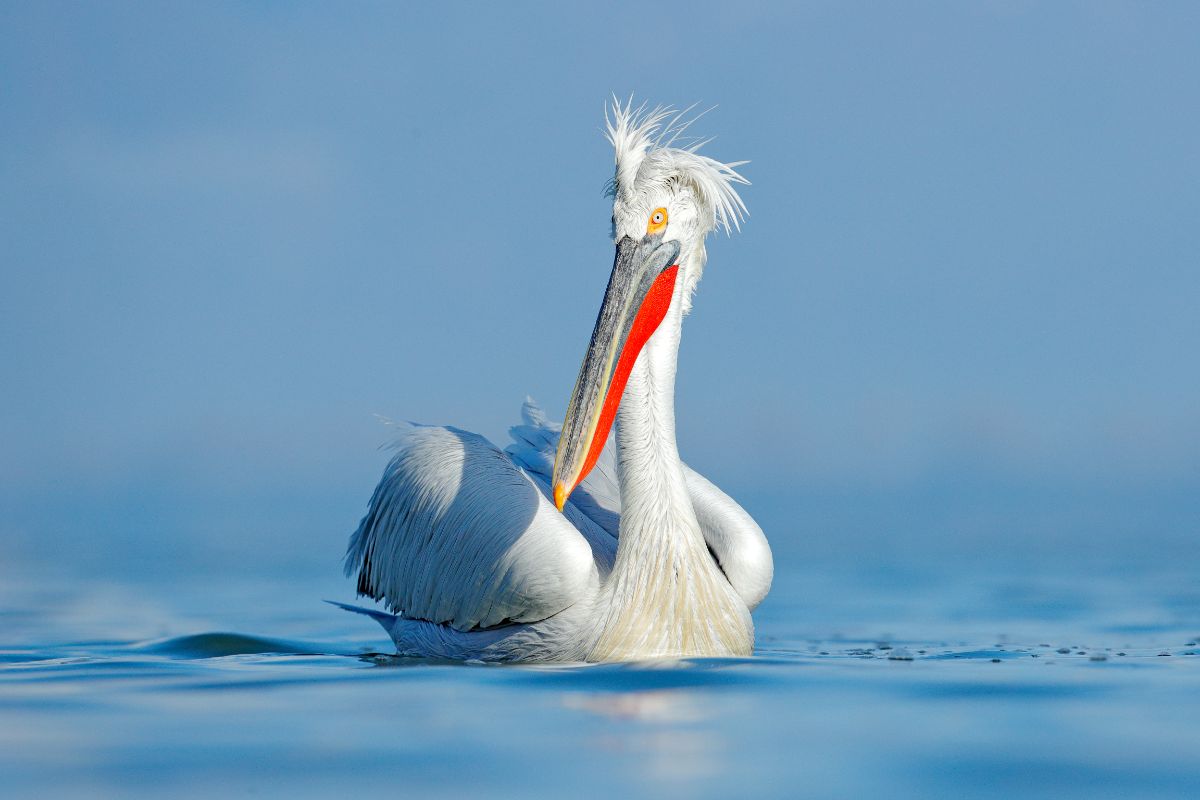
The Dalmatian Pelican is the largest pelican species on the planet and has the beak to match. It’s native to Europe, and the northern Mediterranean, where it hunts for fish to fill its stomach.
6. Sword-billed Hummingbird

The Sword-billed Hummingbird has the most extended beak-to-body ratio of all bird species, and you should be able to tell why at a glance. Its beak is almost as long as its body!
So why does it need a long beak? To feed on nectar from flowers and corollas, of course! It’s too long to preen, so this bird has to use its feet to clean feathers.
7. Roseate Spoonbill
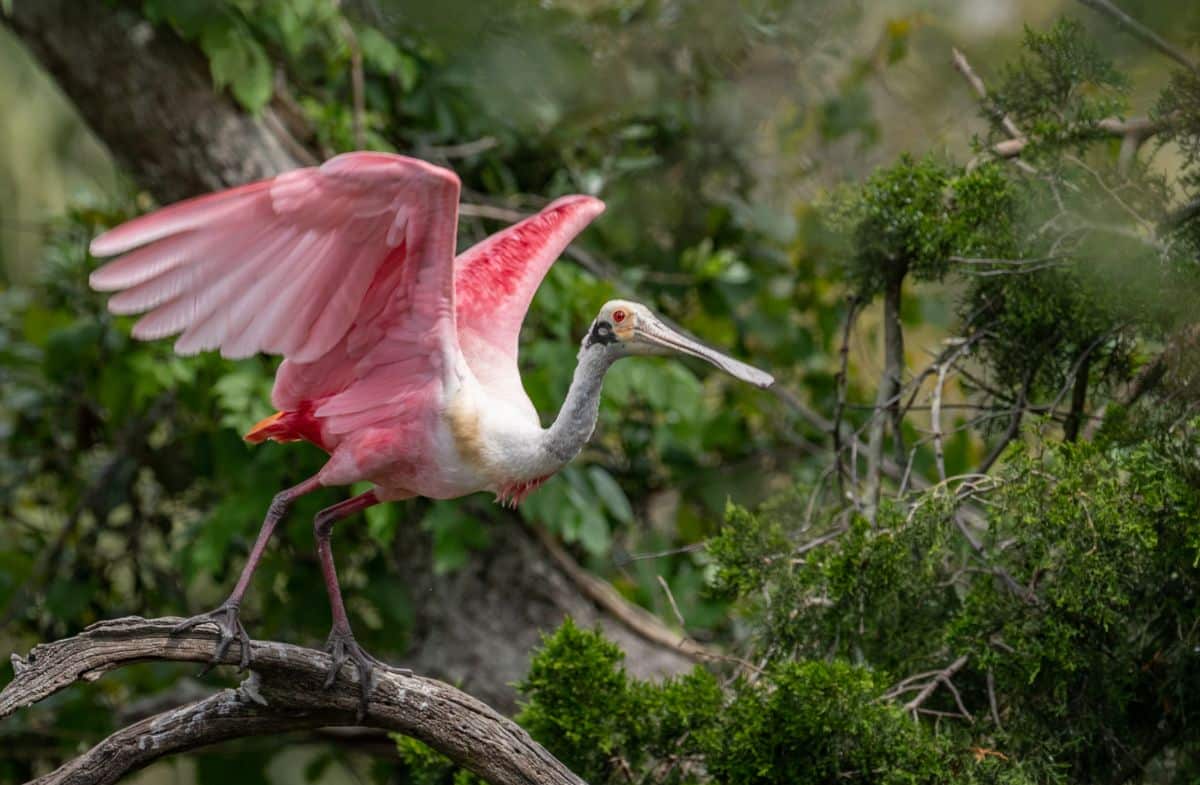
The Roseate Spoonbill has striking pink plumage and wades through the swamps of the southeastern United States, looking for small invertebrates and fish. Its unusually shaped beak is ideal for gently sifting through the mud to find prey.
8. Pied Avocet
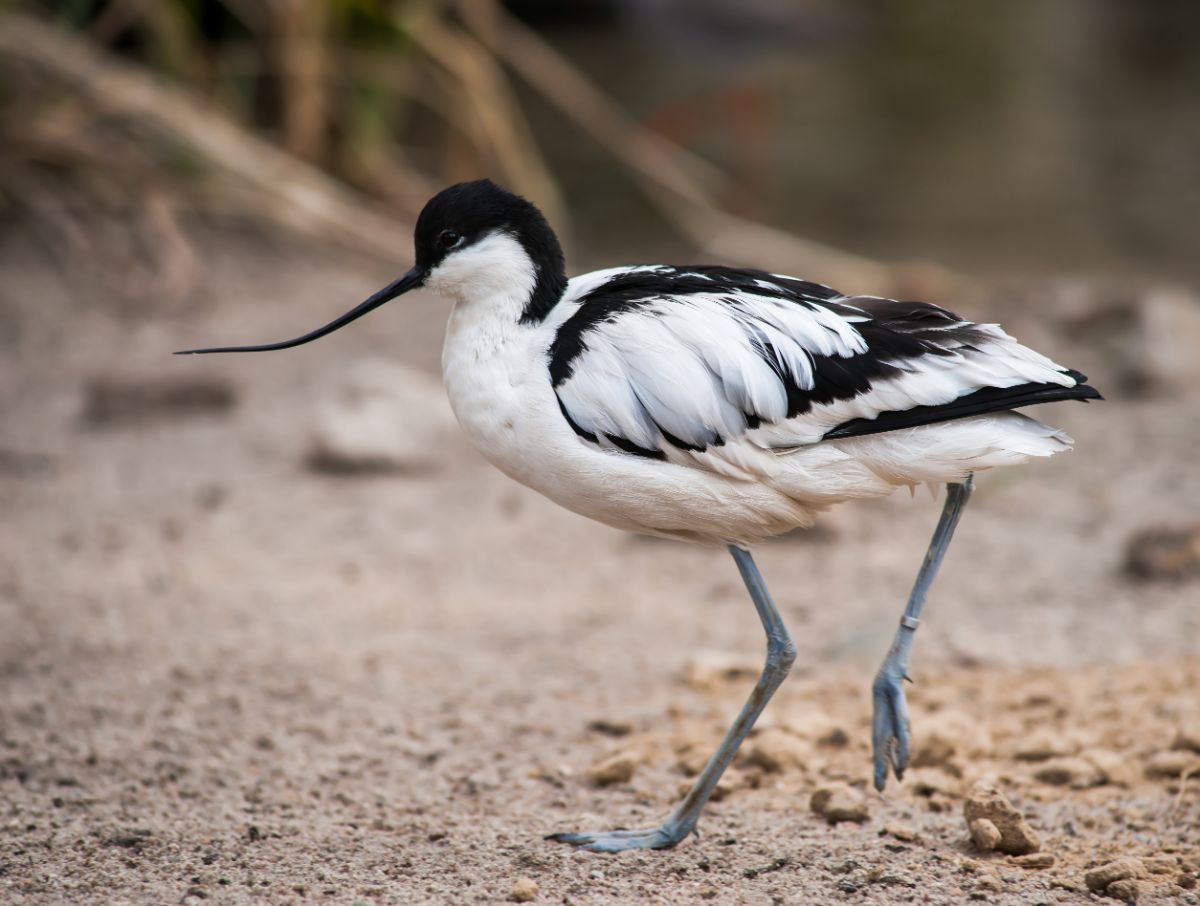
The Pied Avocet has an upward-turned beak that’s very long and thin. It’s a small wading bird that swims the waters of Europe, Central Asia, and Russia.
It uses its beak to snatch bugs quickly and can hunt for food by dunking like a duck for small fish and crustaceans in brackish pools and lakes.
9. Lesser Flamingos
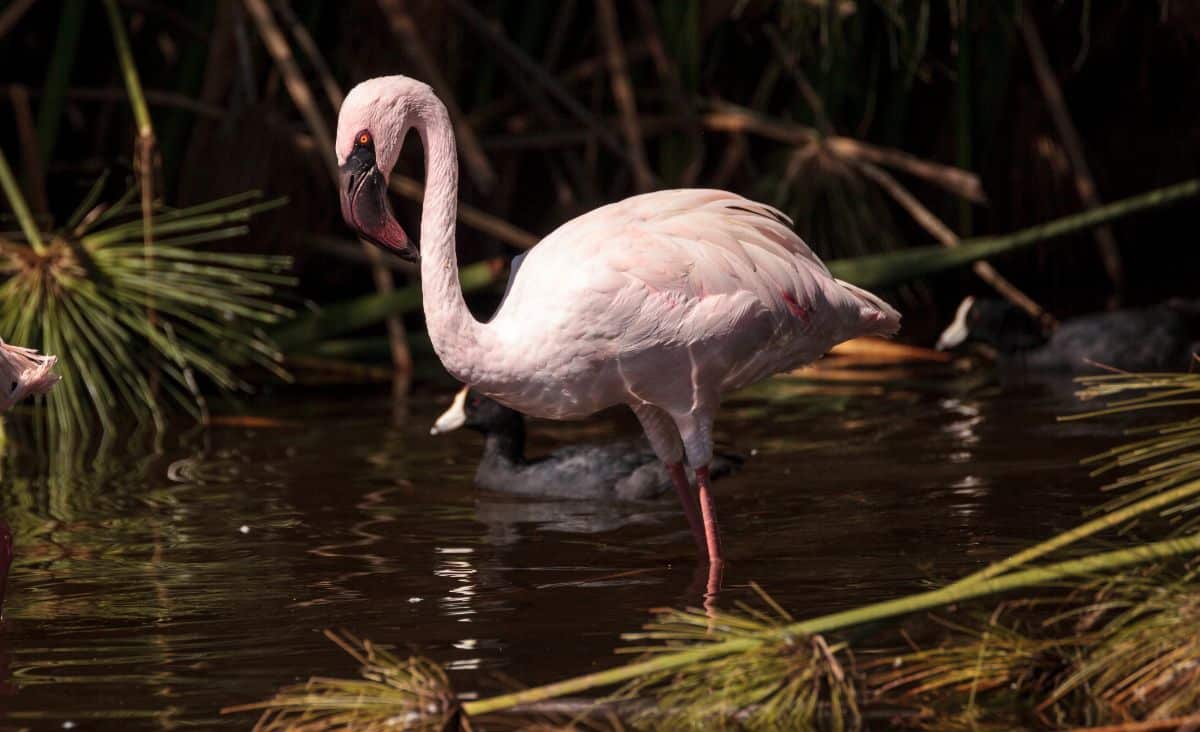
Lesser Flamingo bent beaks help filter tiny organisms from the muddy water as they tip their heads back to feed, and their length helps the water and mud filter through their tongue, so all they get is delicious food.
10. Shoebill
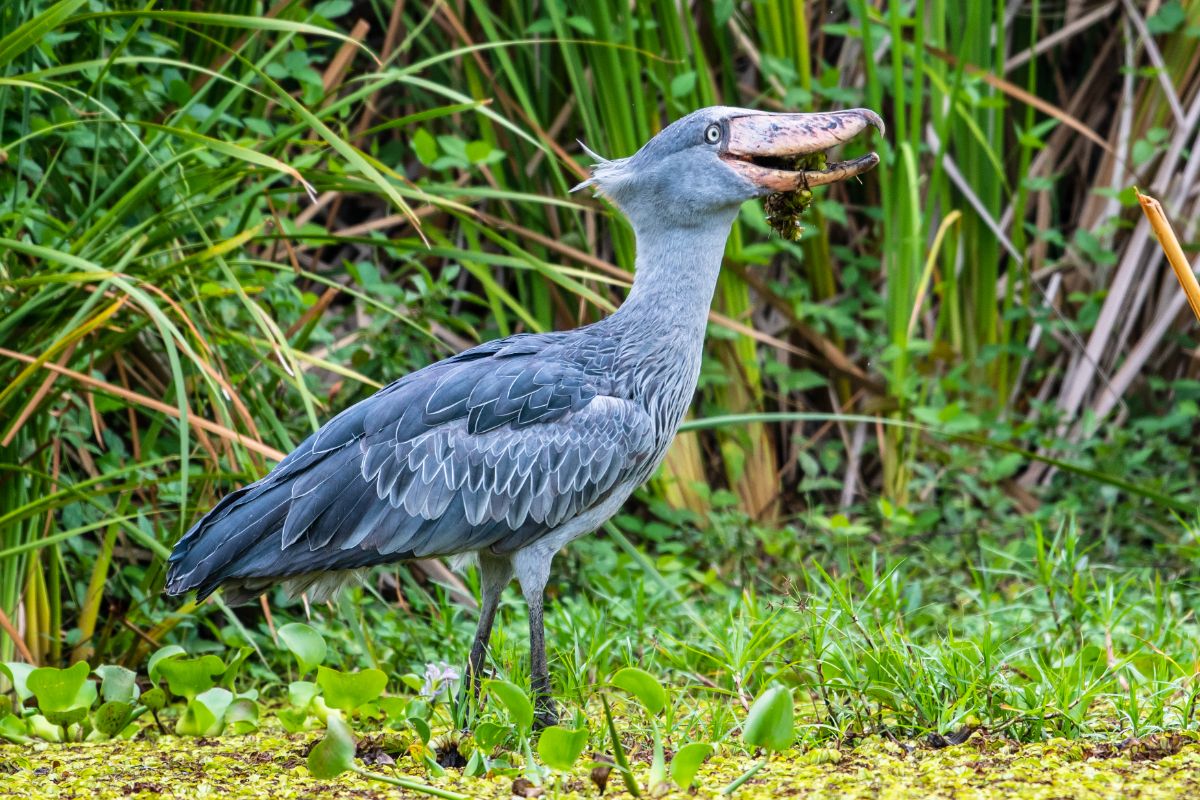
If you must be afraid of a bird, be frightened of the Shoebill. Their thick, stout beak can bludgeon, crush, or puncture their prey to death. They stand very still and wait for their chance to strike at unwary prey.
They also use their beaks for a beak-chittering display whenever it returns to their flock or encounters another of their kind.
11. Rhinoceros Hornbill
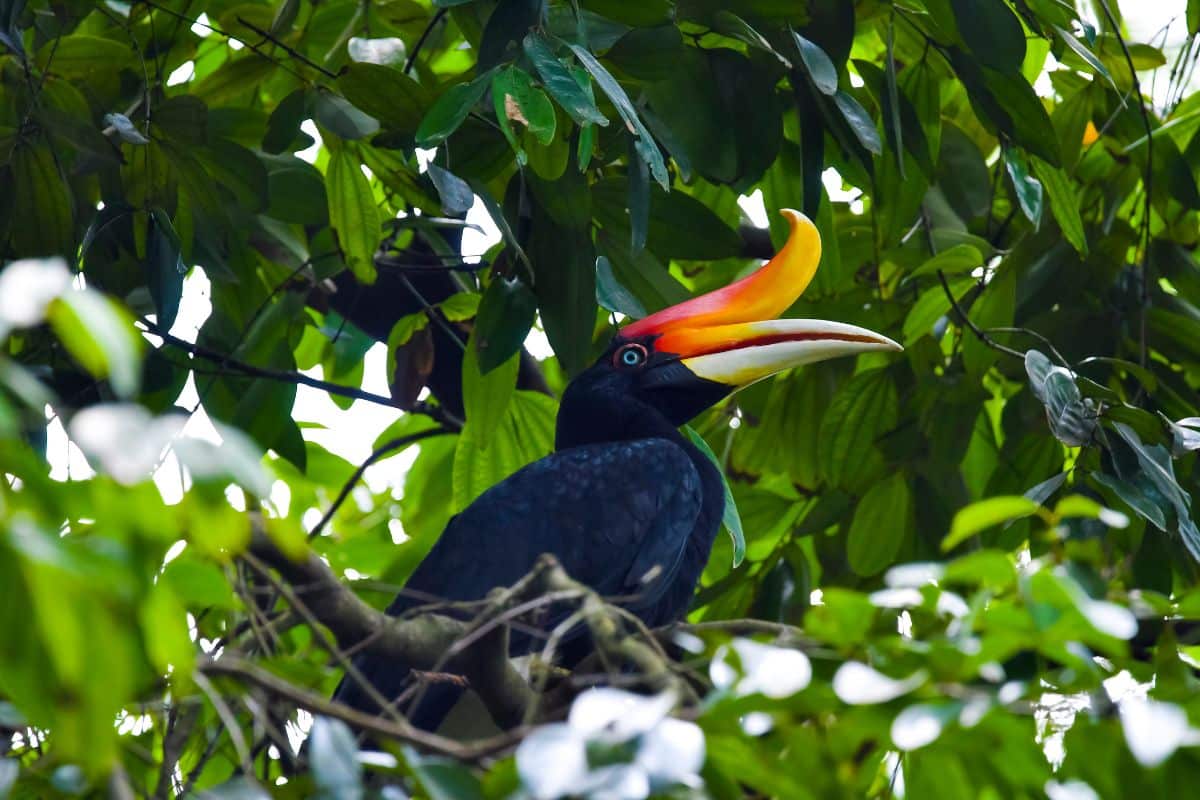
The Rhinoceros Hornbill creates a striking silhouette as their cries echo through the forest. Their beaks are similar to the toucans. The addition to their beaks is known as a casque, which is seen in other hornbill species. Their massive casque at the top of their beak amplifies their call, so you can easily hear them a half-mile away.
12. Great Hornbill
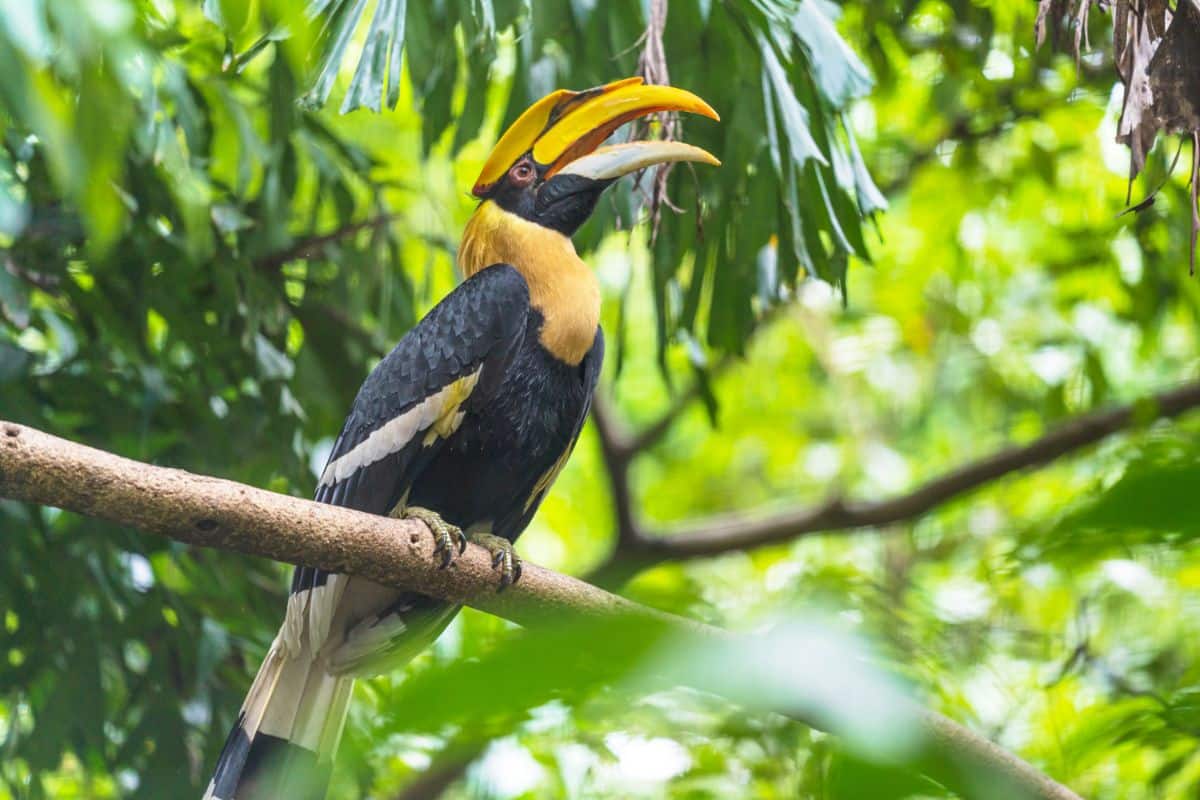
Great Hornbills also use their casque to amplify their cries and fight other males for females’ attention.
13. Collared Aracari
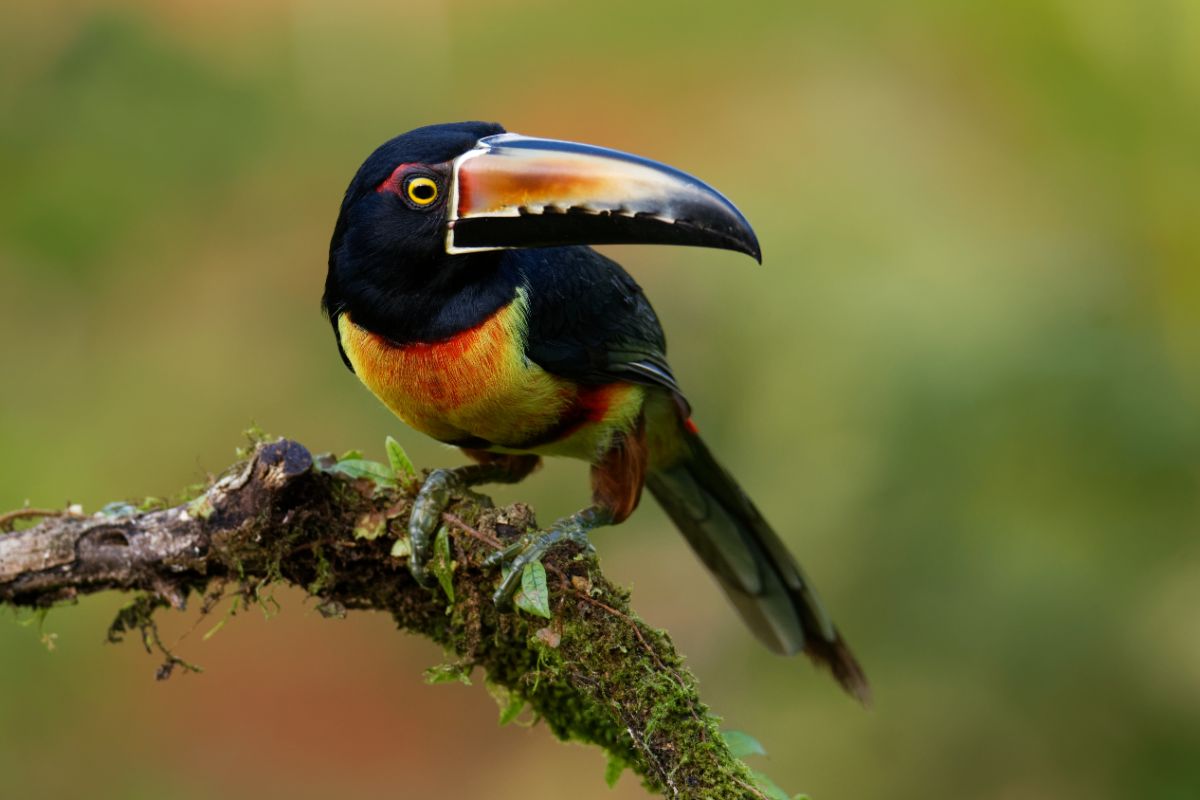
The Collared Aracari is a close cousin of the Toucan, and its beak is used much the same way, although theirs has a metallic rainbow sheen.
14. Keel-Billed Toucan
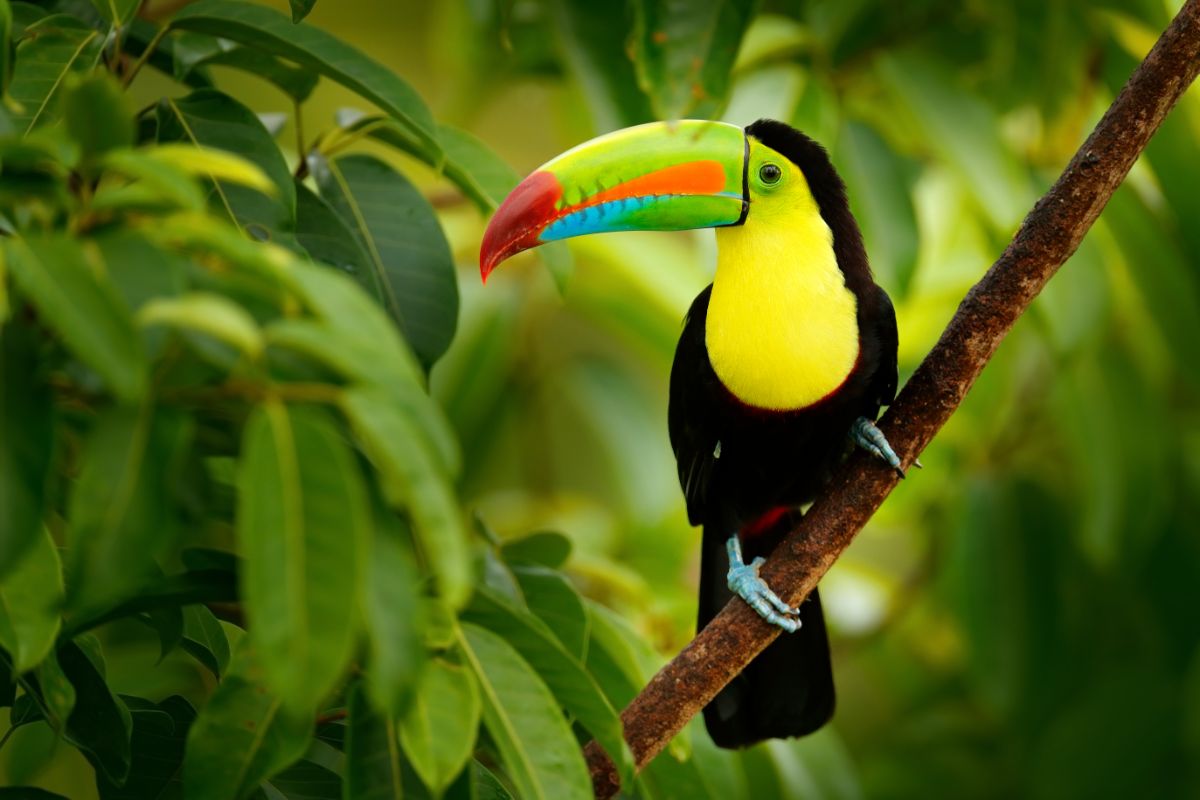
The Keel-Billed Toucan is instantly recognizable thanks to its rainbow-colored beak. However, it has the same function (or lack thereof) as other toucan species.
15. Hudsonian Whimbrel
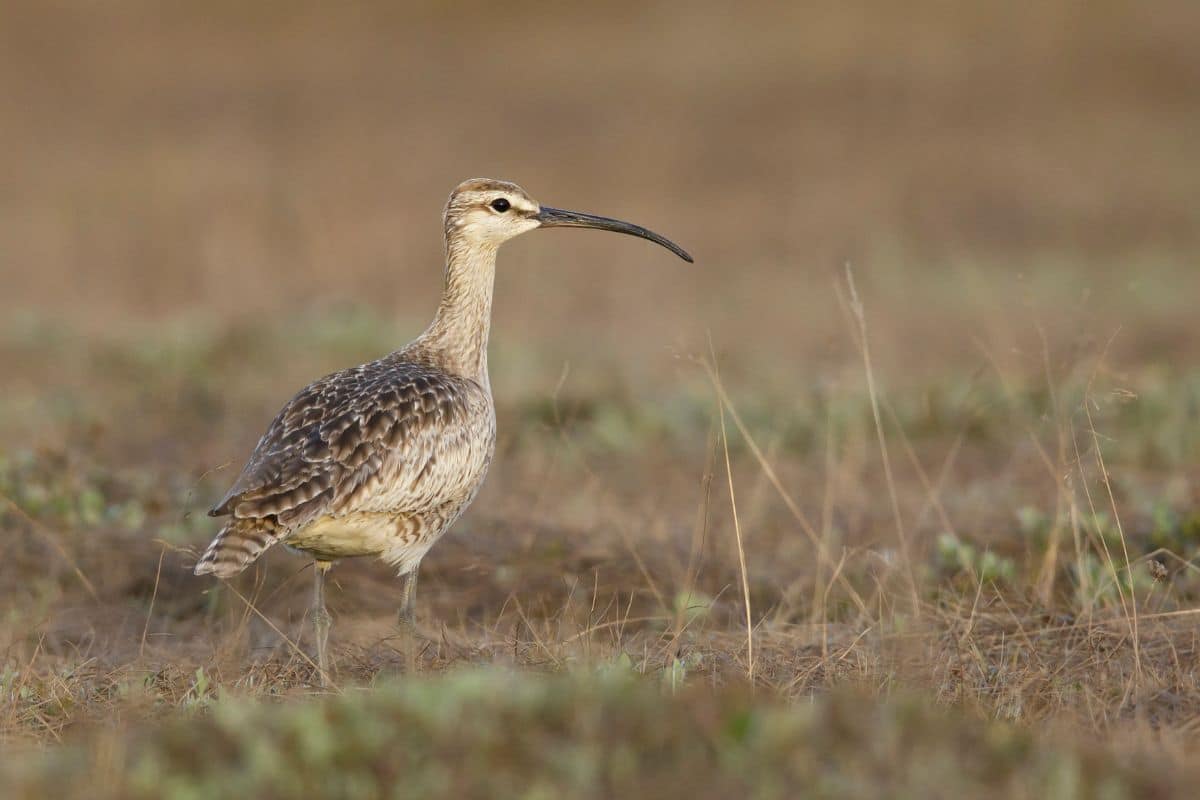
These birds use their delicate, long beaks to sift through mud, searching for crabs and other invertebrates in coastal regions of the Northwestern US.
16. Great Spotted Kiwi
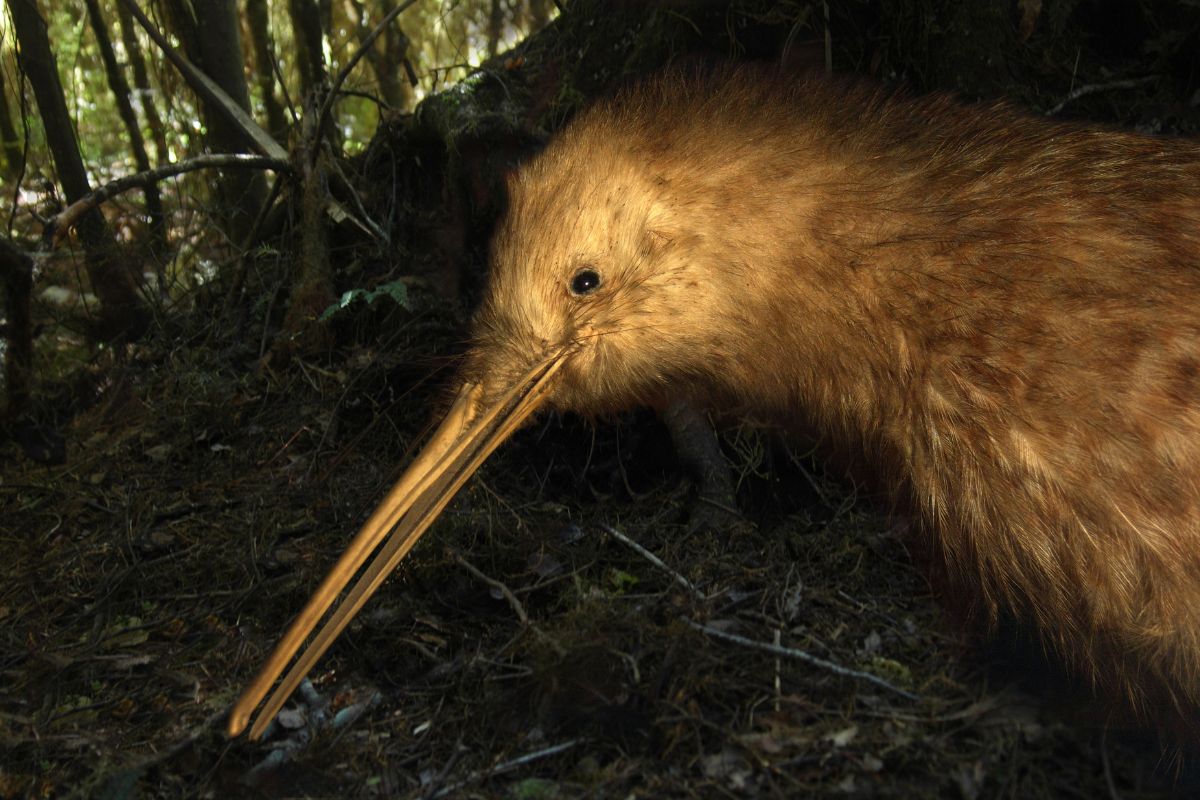
Known as one of the few flightless birds (and perhaps the cutest), the Kiwi uses its beak as a sensor to hunt for prey, along with long whisker-like feathers along its face.
It also uses its long beak to help find suitable places to dig dens and burrow under the ground. Their beaks aren’t only their mouths but their main sensory organs.
17. Goliath Heron
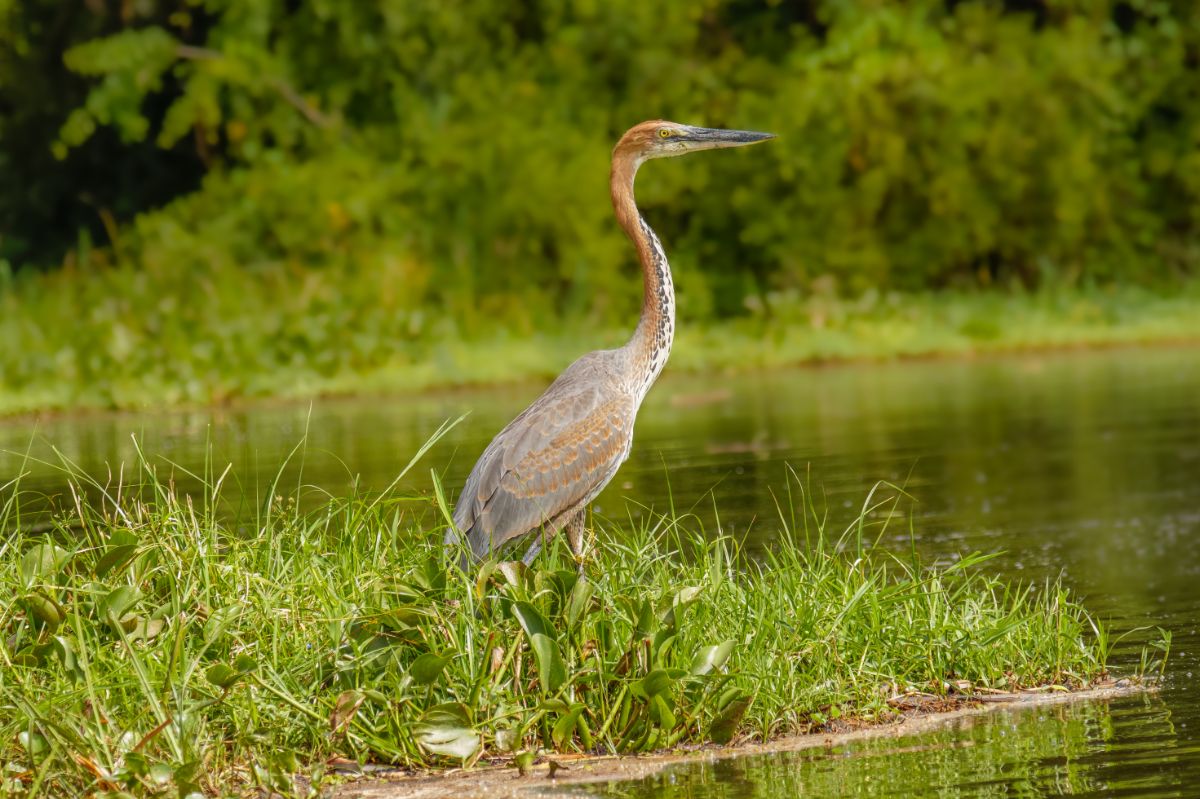
This massive heron uses its mighty beak to snap up fish that swim by as it stands still in rivers and lakes. It’s the largest of the heron species, and its beak is equally impressive.
18. Red-Necked Avocet
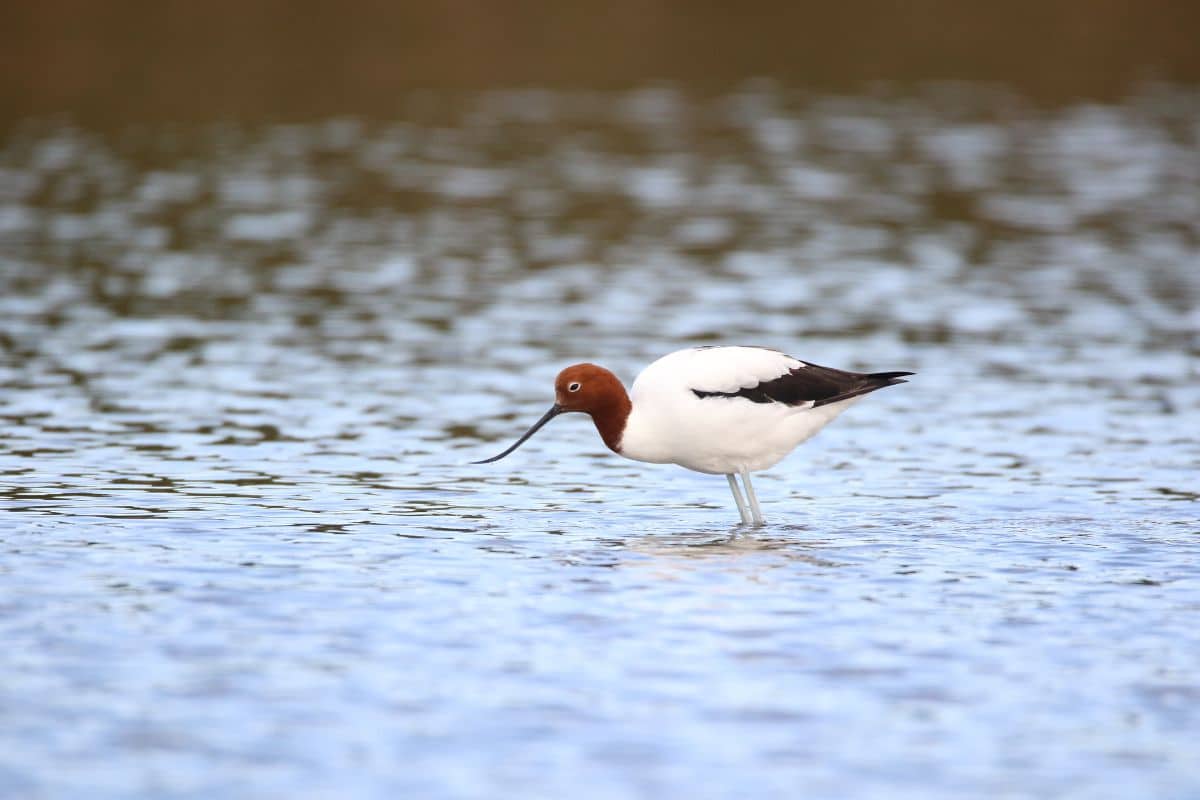
The Red-Necked Avocet uses its long beak to pick through mud and dirt in Australia. It’s an expert at finding small bugs and invertebrates that call water pools home.
It’s the largest sandpiper species globally and has the longest beak of all sandpipers.
19. Southern Giant Petrel
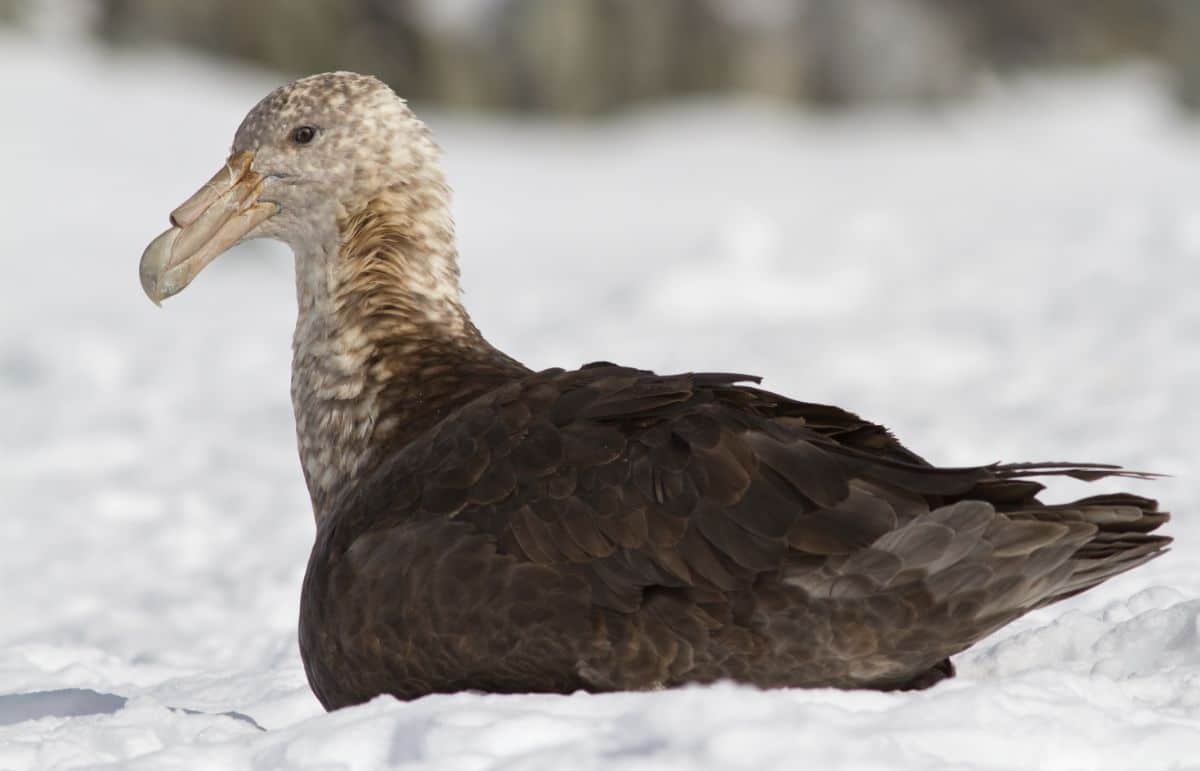
This massive bird uses its long, hooked beak to snatch food from other birds and scavenger on the open water.
20. Southern Yellow-Billed Hornbill
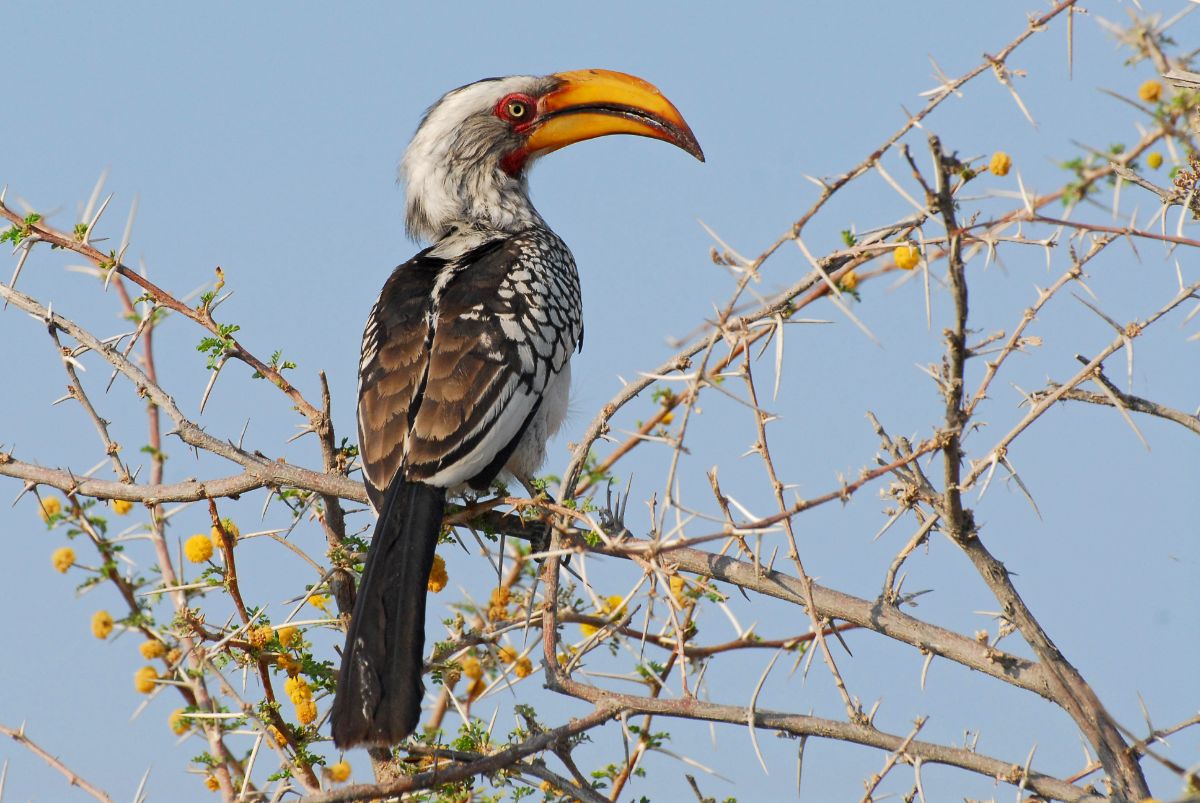
You probably know the Southern Yellow-Billed Hornbill from The Lion King as Mufasa’s loyal advisor Zazu. In the real world, their beak carries their voices throughout the savannah and alert others to food and dangers they encounter.
21. Australian Pelican
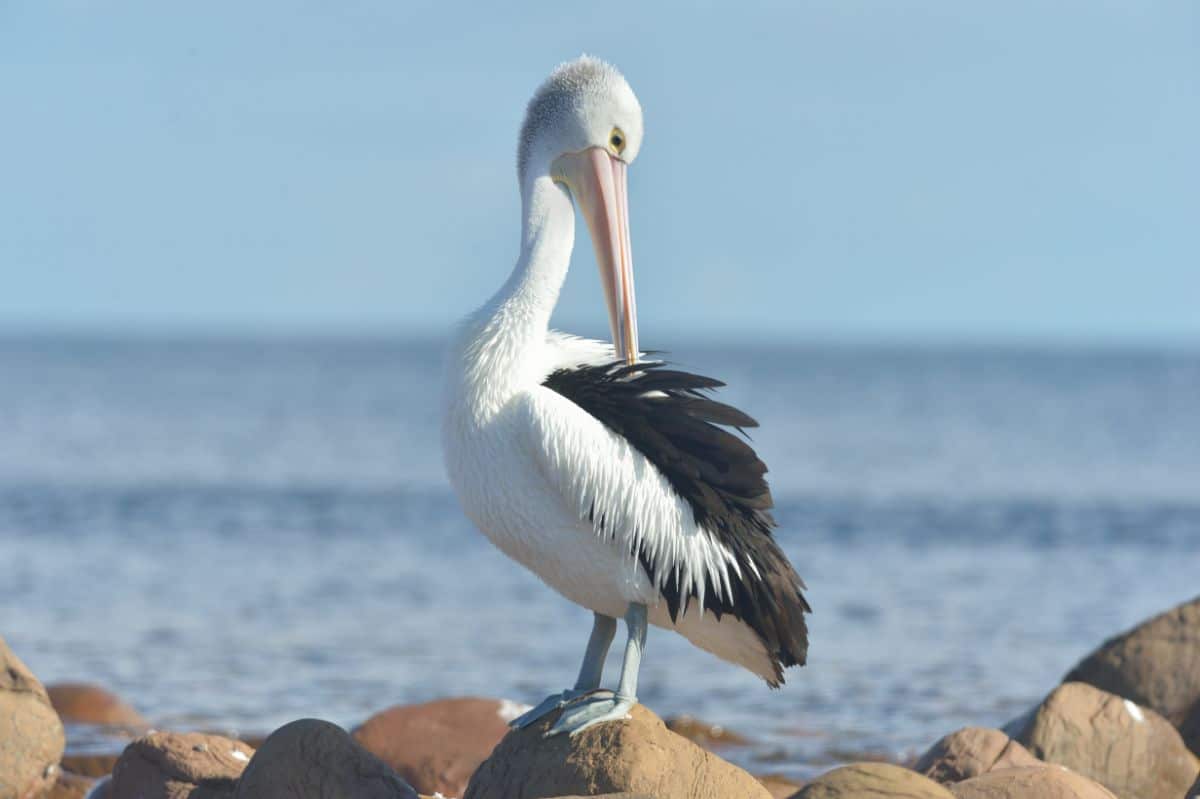
While the Dalmatian Pelican is the largest, the Australian Pelican has the distinction of having the longest bill of any bird species alive today.
22. European White Stork
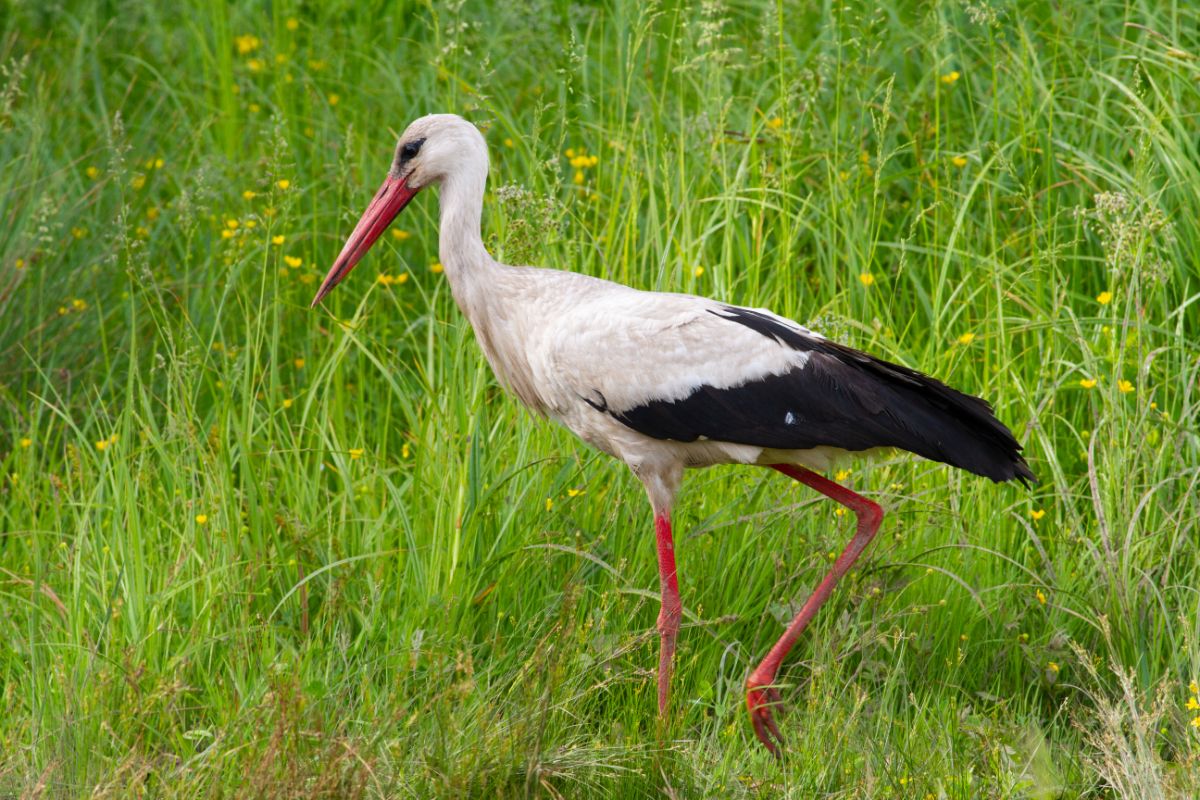
Popularized by the myth that storks bring babies, the European White Stork certainly has looks and a gentle demeanor much better than other stork species.
23. American White Pelican
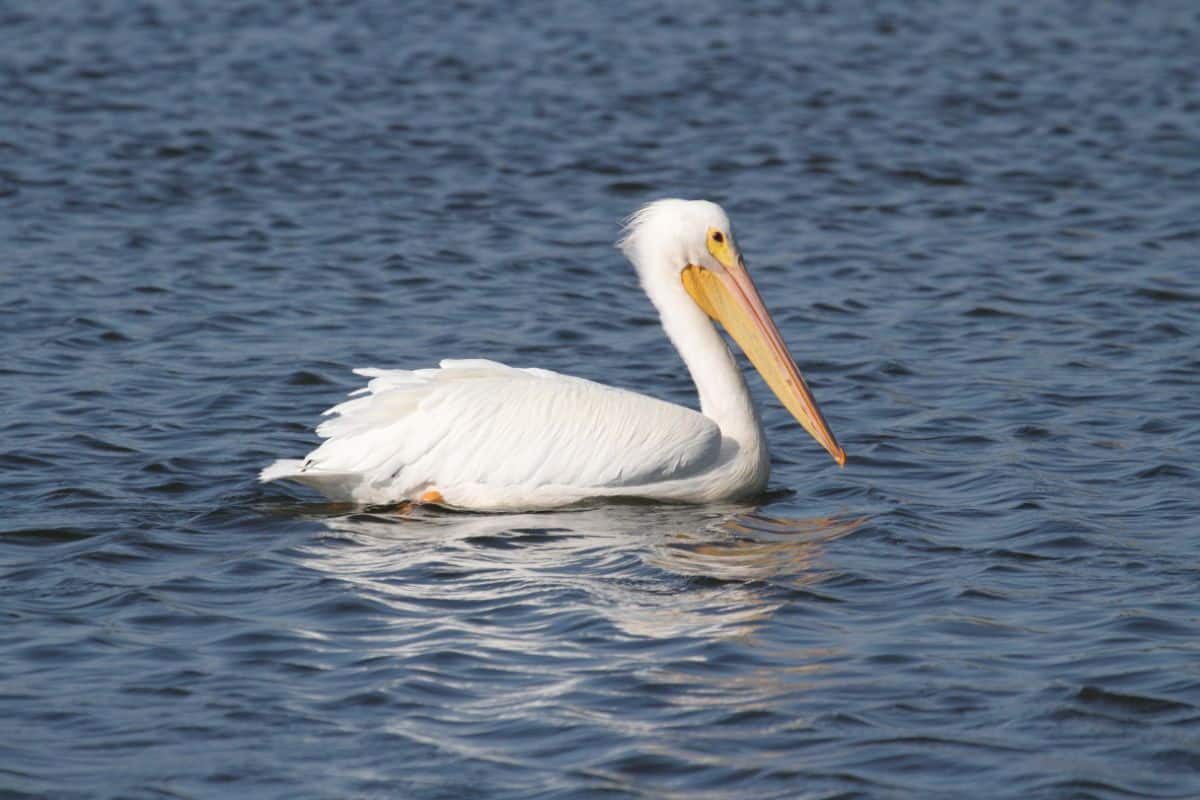
The American White Pelican is the only pelican species that grows a horn on its bill, promptly falling off once the mating season is over.
24. Common Snipe
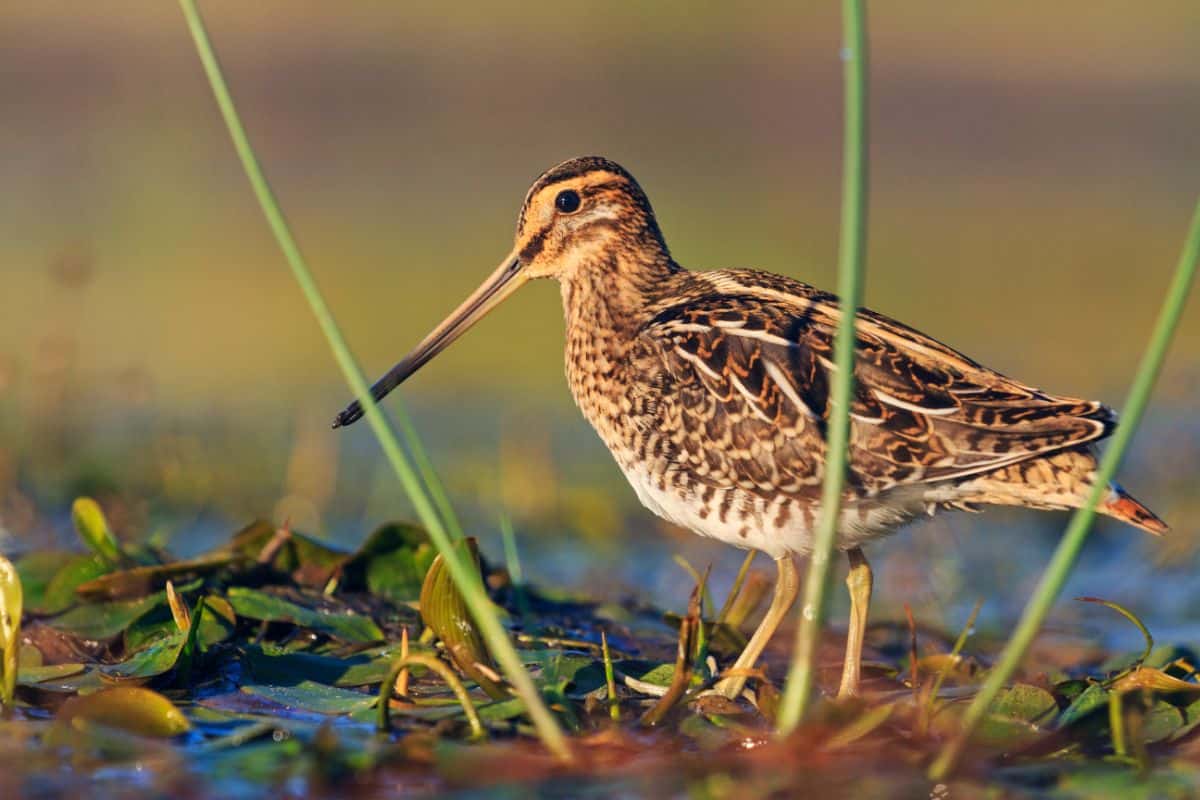
The Common Snipe has the longest beak of any wading shorebird and uses that beak to hunt for prey along the coasts of Europe and Asia.
25. Red-Billed Scythebill
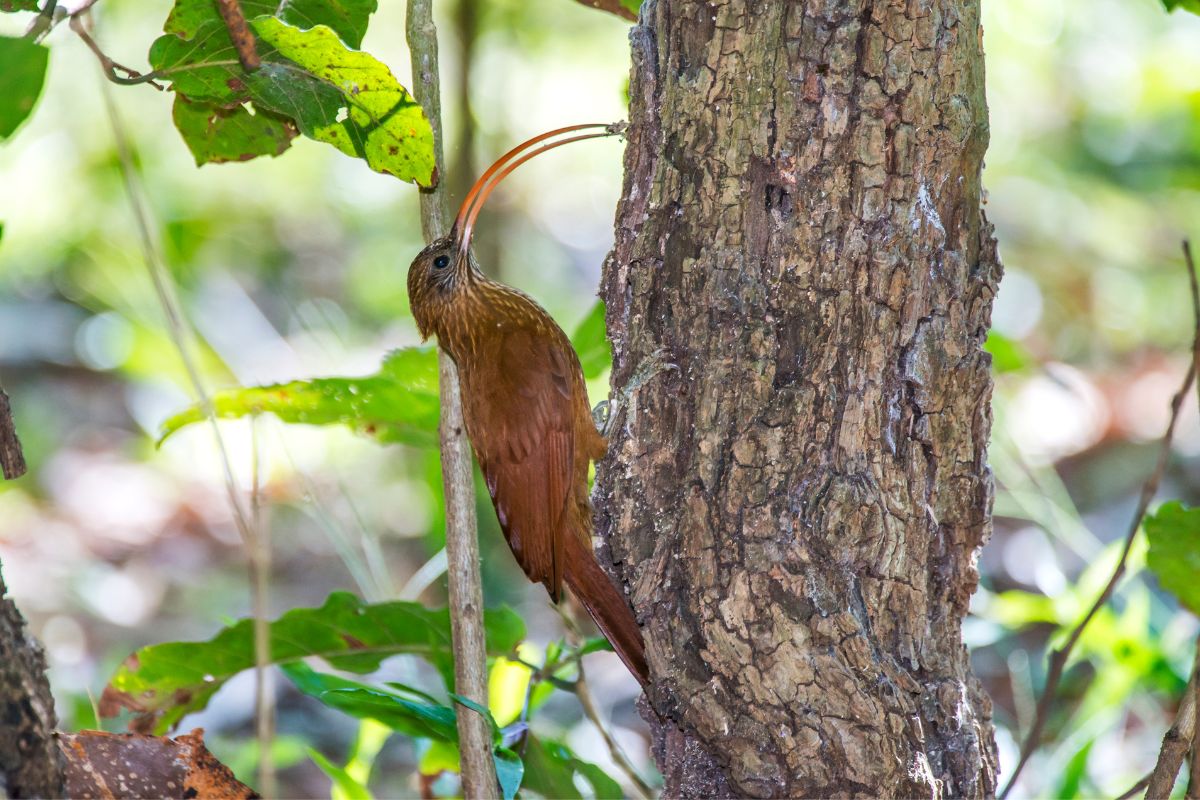
You need only to look at this bird to understand its name. Its long, curved beak is perfect for probing bugs while it crawls up trees and hunts under the bark.
26. Hoopoe
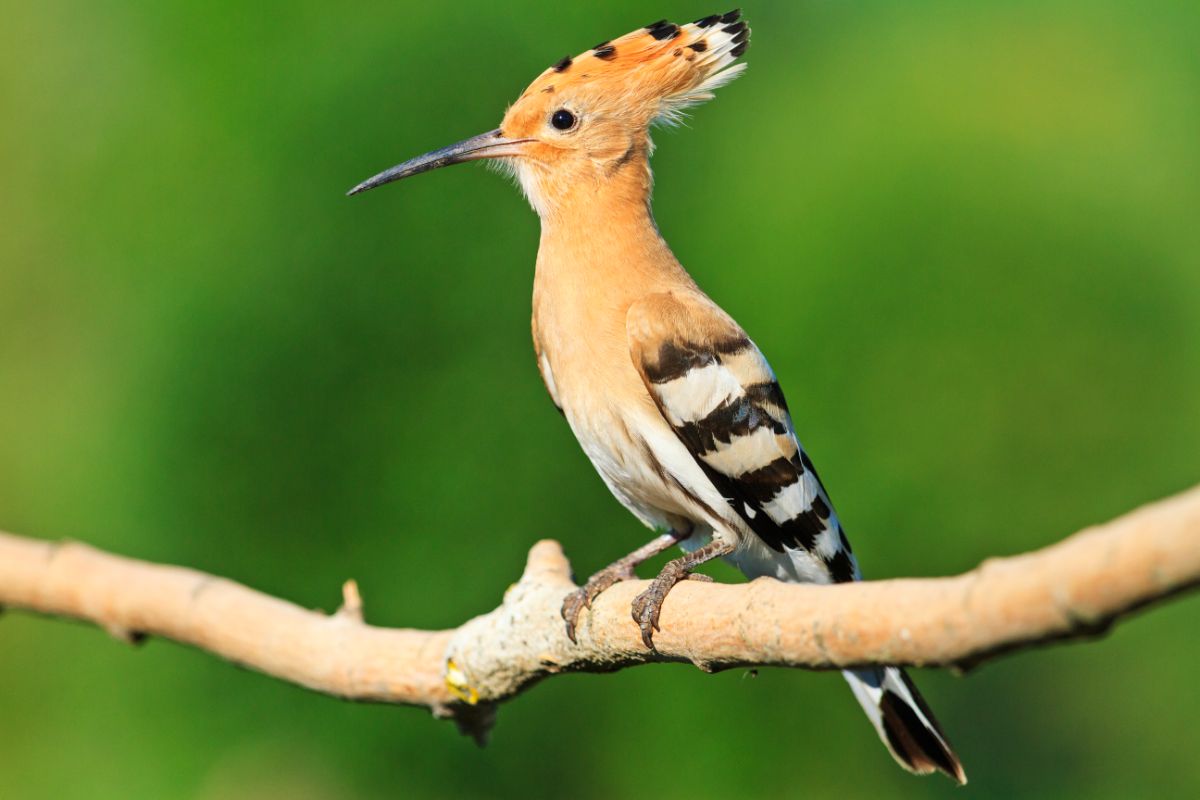
This bird is famous for its crest and very long and slender beak. It uses that beak to hunt for lizards and insects that probe under the earth.
27. Eurasian Spoonbill
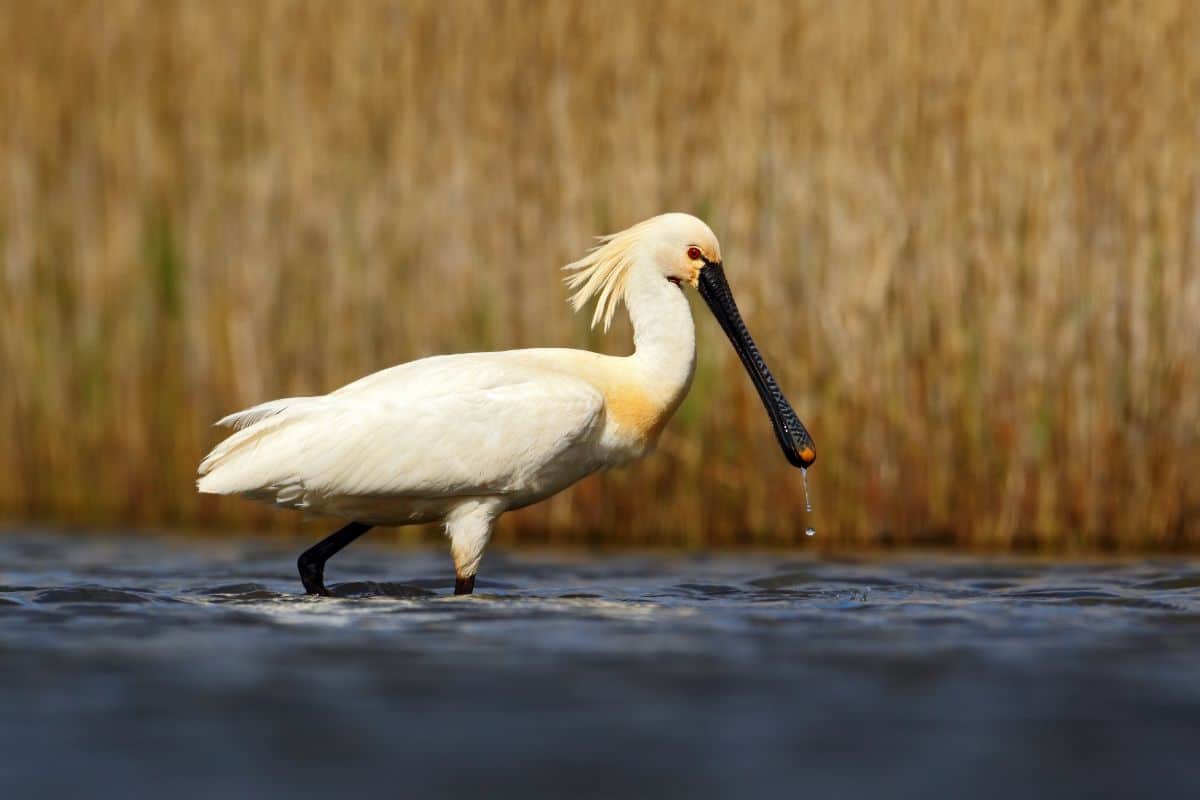
The Eurasian Spoonbill’s beak is simial to the Roseate Spoonbills’ beak, and it uses it to sift through mud and look for prey.
Conclusion
Even though each of these birds has a long beak, the variety of each bird is fascinating! These birds use their long beaks to their advantages, such as attracting a mate, skillfully finding food, warding off prey, or building nests.
